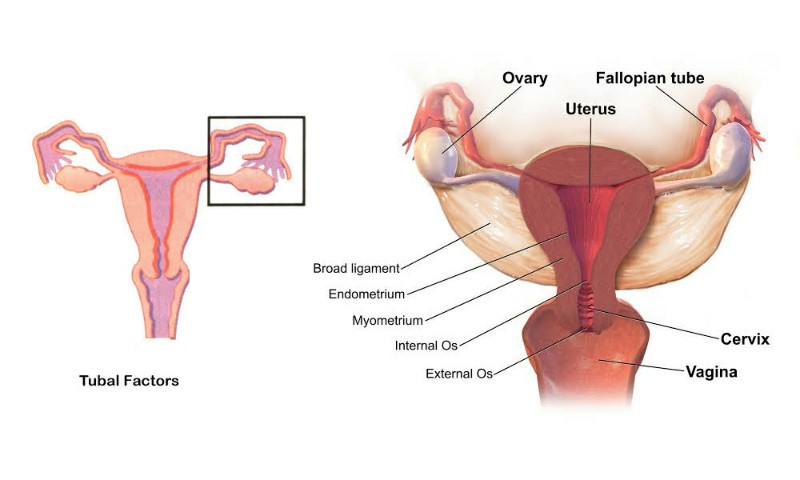
Tubal factor means the defect in the functioning of the fallopian tube. Normally 30% of all the infertility cases are due to tubal factor. That is 3 out of 10 women have this problem. There are two types of tubal defects. First in which the tubes are completely closed called Occlusive tubal disease second is the tubes are open but not functioning which is called Non-occlusive tubal disease. During the process of normal pregnancy, fertilization of the female egg by the sperm occurs in the tube. And the embryo develops. The embryo is round in shape, like a ball. Embryo needs to reach the uterus for implantation and further development. It does not have a transport system of its own. Thus, it's the responsibility of the fallopian tube to transport embryos to the uterus. Inner lining of the tube has hair like tiny cilia. These beat in a rhythmic fashion and gradually help the embryo to reach the uterus. After five days, that is, the 20th or 21st day of the menstrual cycle implantation occurs. It is just not sufficient for the fallopian tube to be open, but it should be functioning. This is called a Tubal Function.
Fallopian tubes are checked or examined in two important ways
Imaging Techniques Like x-ray, saline sonography or Hycosy etc
In x-ray a type of Dye is injected into the uterus, through the cervix, which goes through fallopian tubes and comes into abdomen. At the same time two or three x-ray shots are taken. This gives an idea whether the fallopian tubes are open or closed. This is performed around 6 to 9th day of the period. This test is very simple and relatively inexpensive. This is called HysteroSalpingoGraphy - HSG.
Surgical, Laparoscopy & Hysteroscopy
Laparoscopy is done under anaesthesia. During laparoscopy the camera is inserted into the abdomen through the navel / umbilicus. the condition of the fallopian tube is examined. If we compare x-ray and laparoscopy, then the film of the X-ray is black and white while that of laparoscopy is a colour. This helps us to get more information about tubes. Whether it has blocks, swelling or infection like tubercles. Sometimes other organs get attached / adherent to fallopian. For example, the fallopian tube and intestine get stuck to each other. This can be seen in conditions like Endometriosis. It is important to note that x-ray or laparoscopy is ONLY STRUCTURAL ASSESSMENT of fallopian tube and NOT FUNCTIONAL ASSESSMENT.